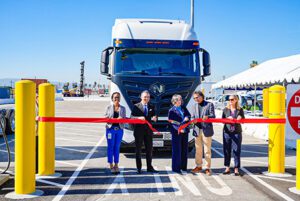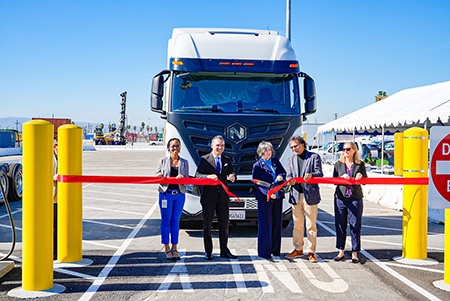
Heavy-duty electric trucks servicing San Pedro Bay port terminals can now charge for free at the Port of Long Beach, which on Nov. 18 announced that it has opened the first two public charging stations in the nation for such vehicles.
The port is partnering with EV Connect, a Los Angeles area-based provider of charge-management solutions for electric vehicles, to provide the stations at the Clean Truck Program Terminal Access Center, 1265 Harbor Ave., Long Beach.
“Southern California will need a network of thousands of heavy-duty charging stations, not only at the ports but all around the region, as society moves to renewable energy to fight climate change,” Port of Long Beach Executive Director Mario Cordero said. “We are proud to lead, support and help accelerate the adoption of these technologies.”
“The Port of Long Beach is committed to becoming a zero-emissions seaport,” Long Beach Harbor Commission President Sharon Weissman said. “Step-by-step, we are making progress toward meeting the goals of both zero-emissions terminal operations by 2030 and zero-emissions trucking by 2035.”
In September, the port announced that a trucking company partner will convert to fully zero emissions by 2025—10 years before the 2035 goal. And in October, the port also announced it is receiving a $30.1 million grant from the U.S. Department of Transportation to deploy a fleet of manually operated, zero-emissions cargo handling equipment at a marine terminal.
The Port of Long Beach has developed a reputation as an industry leader in advancing cleaner cargo movement. In order to tackle greenhouse gases and criteria pollutants, the POLB has set a goal of all zero-emissions cargo-handling equipment by 2030 and a zero-emissions drayage truck fleet by 2035.
About 17% of the cargo-handling equipment at the port is electric powered, which the POLB has said is the largest such fleet in the United States.
Compared to 2005, the year before the port adopted its comprehensive Clean Air Action Plan, the Long Beach port has reduced emissions of diesel particulate matter by 88%, nitrogen oxides by 49%, and sulfur oxides by 96%, data show.

